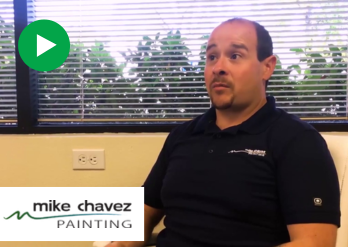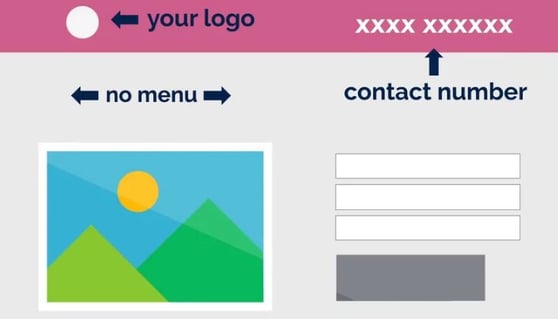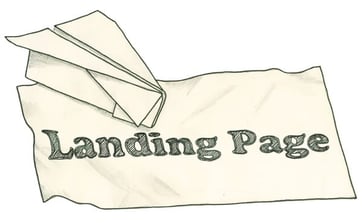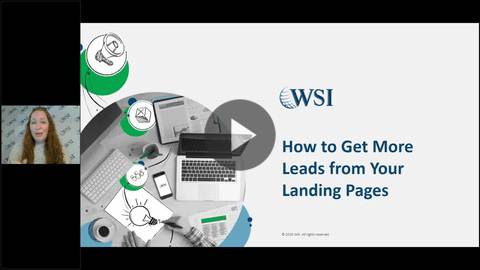Editor's Note: This post was originally published in July 2016, and it's been updated with additional content in July 2022.
Let's get it out of the way right off the top: the #1 landing page mistake is sending PPC ad campaign visitors to a homepage. And yet we still see it all the time.
But facts are facts, and a well-architected landing page is much more likely to convert visitors into leads. The good news is a great landing page isn't complicated or hard to create. For our latest digital marketing video, we put together some information on paid search advertising and building a landing page with a PPC strategy.
PPC: How to Create a Landing Page That Converts
What is a PPC Landing Page?
PPC (pay-per-click) is a marketing tactic where advertisers bid on specific keywords and paya fee whenever their ad is clicked.
A landing page for PPC is the webpage users land on once they’ve clicked on the ad. PPC ads are highly targeted and appeal to specific demographics and customer profiles.
And as a result, these best converting landing pages need to complement the search ad. If you didn't, then you could accidentally send potential customers to random pages that have nothing to do with the ad they just clicked on.
If your goal is to boost brand awareness, you can have the ad take searchers to an already existing business home page. But if you have a more specific goal, like generating leads, you should send customers to a signup page, form, or a page where they can download reports and case studies by giving you their email address.
Building a dedicated PPC landing page requires more time and resources, but it can provide your business with invaluable results like higher conversion rates. In fact, placing a lead magnet on a custom landing page will generally yield an 8% to 20% conversion rate, compared to just 1% to 3% when placing it on a homepage.
What is a Good Landing Page Conversion Rate for PPC?
The conversion rate is the number of people who completed your desired action (made a purchase) divided by the total number of visitors.
A decent conversion rate is crucial for a successful paid search strategy. After all, if the people who are viewing your ads aren’t making any purchases, then what have you achieved?
But what exactly is a good conversion rate – is it 3%, 10%, or 25%?
According to data across industries, the average conversion rate was around 2.3%. However, the best examples of landing pages that convert achieved conversion rates of 5.3% and higher.
Ideally, you want your landing page to convert around 11.45% of website visitors.
By optimizing your PPC landing page correctly, you’ll be able to maximize the money you spend on your paid search ads.
But how do you encourage visitors to take action?
Here’s where you can get more conversions with an effective landing page:
How to Create a High-Converting Landing Page
Creating a perfect landing page that converts requires a strategic approach. Follow these steps to maximize your landing page's effectiveness:
1. Identify Customer Personas
Like any marketing technique or strategy, understanding who is interested in buying from you is as important as your product or service. Think about it like fishing: you wouldn't fish in a lake without researching what type of fish live in the lake – you need to know which bait to use! Bass bait won't help you catch fish in a lake full of muskies. Landing pages are like bait, so in order to catch your dinner, you need to understand what type of fish are out there.
Once you've identified the types of customers you're after, you'll have more information with which to build a landing page catered perfectly to your core target audience.
2. Define A Goal
Homepages aren't optimal landing pages because, by definition, they consist of general information and act as the gateway to pages containing more specific details. Every landing page should have its own goal – if that means creating multiple pages for the same marketing campaign based on the different outcomes you desire, that's a much better option than directing every campaign to your homepage.
Landing page goals can include capturing email addresses, actually selling products or services, getting visitors to fill out a survey, or even referring your business to a friend. Any action you want your potential customers to take is considered a goal and can and should be turned into a landing page!
3. Target Keywords
Converting landing pages for PPC should match the target keywords you’re bidding on, and they should deliver on the promise in the copy. For example, if you’re targeting customers who are looking for the best “Christmas deals,” don’t send them to a page on “10 must-cook meals for Christmas.” This is incredibly misleading, and the page won’t provide value to readers.
4. Design For Conversion
There are several keys to designing a landing page with conversion in mind. The first is to remove everything on the page that could distract visitors from your main message (so things like your navigation bar and links to other pages should go right out the window). Next, ensure your headline – which should make your main message clear – should be the largest text on the page. The headline also needs to connect directly back to the ad or email campaign that sent visitors to the page. Copy should be kept short, and, when possible, or short video or at least a custom image can increase conversions.
Finally, we come to the lead capture form, which is extremely important because if it doesn't work properly or it confuses visitors, all the hard work you've done to this point means nothing. The form should be short and sweet: the more hoops a potential lead is required to jump through, the less likely they are to convert.
5. Create a Captivating Message
Once you've completed all the above steps, it’s now time to craft a captivating message that’ll resonate with the people who visit your site. Your message should contain eye-catching visuals and encourage visitors to take your desired action – sign, download something, make a purchase, etc.,
Here are some tips you can use:
- Craft an exciting headline that captures the attention of readers. Ensure it also showcases what you want to sell.
- Incorporate attention-grabbing visuals that will make your product, service, or offer more appealing.
- Consider which stage of the customer journey your visitors are in when crafting your message. This way, you can encourage them to take action effectively.
- Ensure you show visitors the benefits of your product or service – instead of the features you offer. In other words, how will your product or service solve their problems?
- Do some research and determine what uneasiness visitors might have about what you’re offering, and ensure your copy solves these issues.
- End the copy with an encouraging call to action.
- Ensure your sign-up process and forms only require basic info like email address and name.
6. Build Trust
Visitors are more likely to take action if your landing page is trustworthy, credible, and transparent.
You can boost trust by optimizing on-page factors like ensuring your page loads quickly, has error-free content, high-quality visuals, and more.
But you can also encourage visitors to trust your offer by including the following on your landing page:
- All the big-time clients you’ve worked with
- Customer reviews and testimonials
- Case studies
- Certifications and awards
Adding these elements to your landing page will inform readers about your brand, who you are, and what you’re selling. This way, they have fewer hesitations about buying your product online or taking any other desired action.
For example, you can offer 100% money-back guarantees to reassure people that they’ve got nothing to lose by trying out your product or service.
If you're offering a free trial or freemium option, you can encourage visitors to sign up by letting them know that they don’t need to enter their credit card details.
Additionally, you can ensure visitors that their email addresses and other information won’t be distributed or used for marketing purposes that they don’t agree with.
7. Ensure your Page is Mobile Friendly
Did you know that mobile search has taken over desktop search?
In fact, desktop web browsing traffic has decreased to 48.7%.
As a result, it’s crucial to ensure that your landing page that converts is mobile-friendly and operates efficiently for mobile users.
Smartphones are becoming more and more predominant in ecommerce. As a result, it’s imperative to invest in mobile-friendly web pages.
Additionally, you should note that the design for mobile is different from the desktop design. For example, you should replace desktop forms with a click-to-call button. But if you do want to collect visitor info, you should include a simple, short form that’ll collect basic information. You’ll also need to ensure that the mobile page is easy to navigate, all the buttons can be seen and used, images load properly, and more.
8. Measure Landing Pages
The goal of the highest-converting landing page is to convert as many visitors into new customers as possible. Since it's a fact that some high-converting landing pages will perform better than others, depending on how well their conversion design convinces customers, measurement is an extremely important part of the process. Ensure you measure and test multiple landing pages for the same goal against each other – and then use the one that gets the best results!
If you would like more information on landing pages that convert or professional help developing a PPC or conversion strategy, get in touch with your local WSI Digital Marketing Consultant today.






